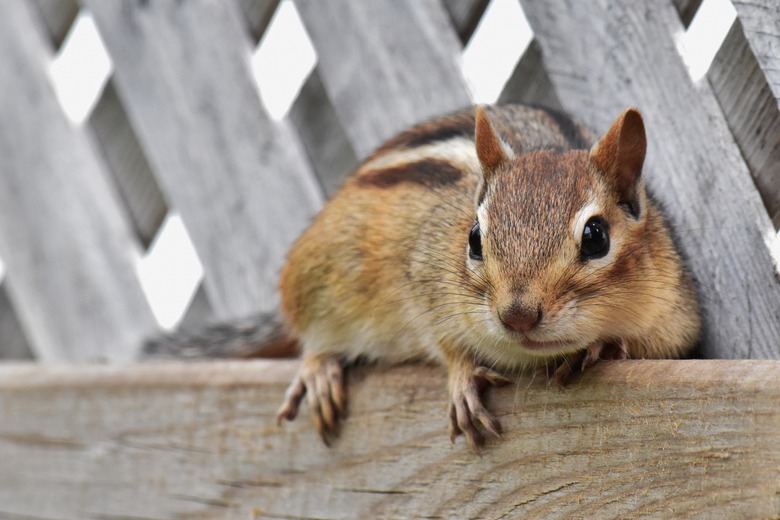How To Get Rid Of Chipmunks In Walls
We may receive a commission on purchases made from links.
Chubby-cheeked chipmunks are cute from a distance, but they're not so cute when they're chewing up your drywall or scampering around in wall spaces. Chipmunks aren't common home invaders since they are burrowing animals and usually find refuge in underground burrows, although they can end up digging into your walls or attic. Learn how to safely get rid of the chipmunks and prevent them from coming back.
Damage From Chipmunks
Damage From Chipmunks
Chipmunks can cause lots of damage if they get inside your home, so getting rid of them quickly minimizes the destruction. Like other rodents, chipmunks spend a lot of time gnawing on things. They'll chew through almost anything in your walls, including the walls themselves. They can damage wiring, Sheetrock, insulation, and other materials they encounter. Chipmunks can also chew holes in walls or make their entry point larger by chewing away at the edges of the hole.
Chipmunk Health Issues
Chipmunk Health Issues
Another concern with having chipmunks in your home is the health risk to your family. The furry critters often carry various parasites, including fleas and ticks, that can enter your home. Some of those insects can cause health issues, such as ticks causing Lyme disease. Quick removal helps protect your family from these health risks.
Removing Chipmunks From Walls
Removing Chipmunks From Walls
The safest way to handle any wildlife situation is by calling pest control professionals who have experience with wildlife. They understand how to handle chipmunks safely. Trying to remove them yourself puts you at risk for bites or other injuries.
Live traps are an option if the chipmunk is loose in your home or in the attic. This is a humane way to catch the chipmunk and move it out of your home. The wildlife removal professional will then relocate the chipmunk away from your home.
One-way excluder doors are another option that wildlife professionals sometimes use. These doors go over the chipmunk's entry point attached to the side of the house. When the chipmunk or other wildlife leaves, the door closes behind it and won't open the other way. This keeps it from reentering your home. However, this option shouldn't be used to get rid of wildlife unless you're sure there aren't babies inside your home that could be left behind unattended if the adult gets stuck outdoors.
Repairing Entry Points
Repairing Entry Points
Once you evict the chipmunk, seal up the suspected entry point. Look for other gaps and cracks where chipmunks and other critters can enter your home. Look along the foundation, especially where the siding starts, and around doors, windows, vents, and other holes in the home's walls and roof. Using caulk is often enough for small cracks and gaps, but larger holes often need more extensive repair. A contractor can help you with the repairs.
Repelling Chipmunks From Your Home
Repelling Chipmunks From Your Home
Keeping your landscaping trimmed, especially right next to your home, can discourage chipmunks from getting in. Avoid having things near your home's foundation that could shelter chipmunks, such as rocks or bushes. Certain plants, including daffodils and garlic, might help repel chipmunks, so planting them near your home may be beneficial.
Routinely check your home's exterior to ensure there aren't any new cracks or gaps that could be an entry point for wildlife. Fences around your property typically only help if they go down at least 8 inches deep to keep the burrowing animals out. Chipmunks are attracted to bird feeders, so avoid putting them in easily accessible places, such as on a banister where a chipmunk can walk right up to it.
